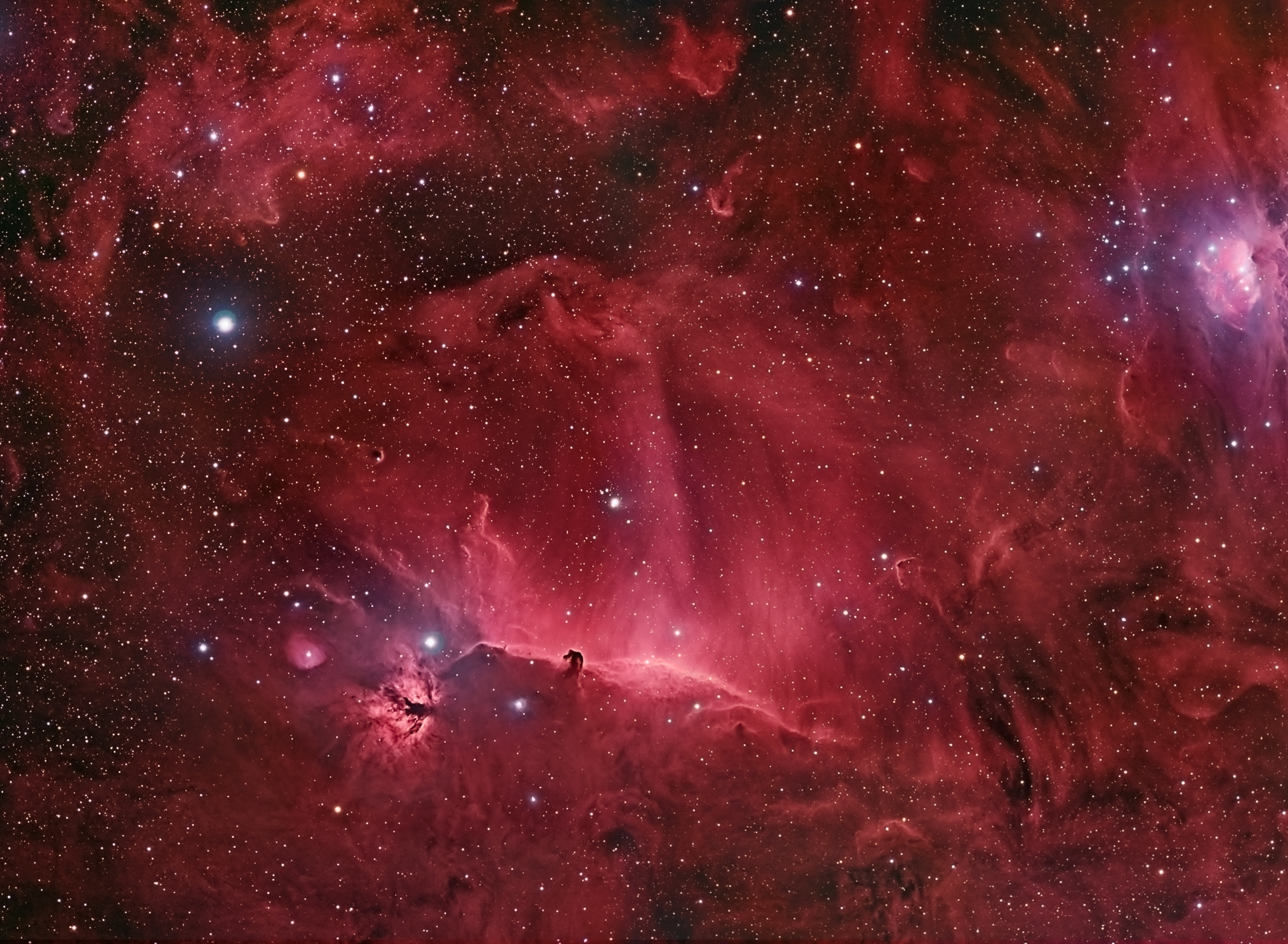
High overhead in the winter sky is the distinctive constellation
Auriga the Charioteer. This is a bright constellation, visible even with city lights, punctuated by the 6th brightest star in the night sky, Capella. To the casual viewer, Auriga appears to be a pentagon in the sky, and in winter it is nearly directly overhead as night sets in. Depending upon the source, the constellation Auriga is described as the actual Charioteer holding a goat, or just the shape of his pointed helmet. The star name Capella is in fact Latin for 'small goat.'
Auriga has the distinction of being located in the direction of the
Galactic Anticenter. What is an anticenter? It is the point in the night sky that is opposite the
Galactic Center, of course :-) The center of the Milky Way Galaxy is located in the direction of the constellation Sagittarius, a dominant summertime constellation. So not surprising, in the winter time when we are looking the 'other direction' in the sky, we find ourselves staring out into space directly out of our Milky Way Galaxy.
The bright star
Capella is relatively close to Earth, 42 light years away. It shines brightly in the winter sky, making Auriga easy to locate. A fascinating fact is that the star Capella is not one star, but a four-star system made up of two binary stars. That means, that the four stars are broken into two pairs of binary star systems. Two of them are big stars, 10 times the size of our Sun. The other two are quite small and faint, so when you see Capella you are primarily seeing the two bigger stars. Some binary star systems can be seen as separate stars in small telescopes or binoculars, but the two bigger stars in the Capella system are too close to see as separate objects.
Try to locate Auriga and Capella tonight and savor the fact that you are staring out of the Milky Way into the vastness of space far away from our home galaxy.
 The first Full Moon following the Vernal Equinox marks the start of the religious festivals in Judaism and Christianity, with Passover taking place on the day of the Full Moon (today), and Easter on the first Sunday following the Full Moon (this Sunday April 8th).
The first Full Moon following the Vernal Equinox marks the start of the religious festivals in Judaism and Christianity, with Passover taking place on the day of the Full Moon (today), and Easter on the first Sunday following the Full Moon (this Sunday April 8th).










